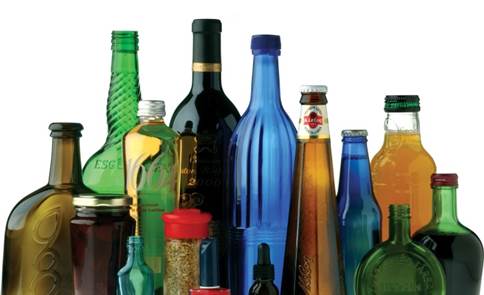
Bottle (glass)

Broken glass is hazardous. Wrap carefully in newspaper or similar prior to disposal.
One of the ingredients of glass-making is sand. Worldwide supplies of sand, according to scientists, are being depleted at an alarming rate.
Sand mined at rivers, beaches and sea floors, is used in three main areas: construction (including concrete and asphalt), glass, electronics, and fracking for the recovery of gas and oil from shale. Read more about sand mining and its problems.
Glass bottles are 100% recycable and can be recycled endlessly. Recovered glass is used as one of the four main ingredients to make new glass. Every tonne of glass that is recycled results in one tonne of raw materials saved to process new glass including - 1,300 pounds of sand, 410 pounds of soda ash and 380 pounds of limestone.
It is estimated that it takes 1 million years for a glass bottle to decompose in the environment, with conditions in a landfill even more protected. Glass artifacts still exist from the origins of its manufacture in Egypt around 2000 BC.
Refill your clean bottles at a bulk bin supplier.
Reuse your own bottles for drinks and home-made sauces.
Make bottle art.
Use as a vase or candle-stick holder.
Separate into clear, green and brown glass and take to the Whanganui Resource Recovery Centre.
Where do all the bottles go?
Please remove wine bottle caps and, if not plastic-lined, place in the aluminium fadge for recycling.
Please remove beer and RTD bottle caps and, if not plastic-lined with plastic, place in the tin fadge for recycling.
Please keep glass from landfill. It is better for our local environment and for the Earth's resources if glass is recycled.